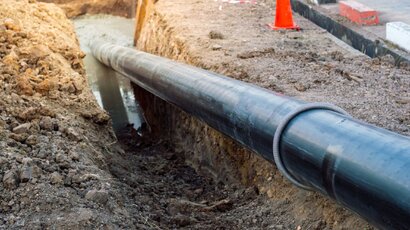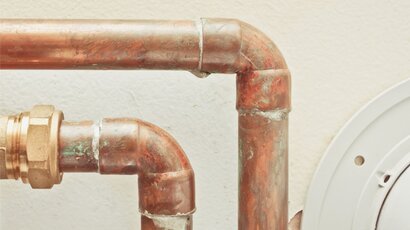Ever noticed mysterious puddles in your backyard or patches of soggy grass that never seem to dry out? It’s easy to chalk it up to a recent downpour or assume there’s a minor plumbing hiccup. But the culprit might actually be right under your feet, your landscaping.
A beautifully landscaped garden can be a dream, but it can quickly turn into a nightmare for your drainage system if it’s not done thoughtfully. Without a plan to manage water flow, even the prettiest design can lead to blocked drains, soggy lawns, and even structural damage.
In this blog, you’ll find out how your outdoor layout influences your drainage system and what smart design choices can help keep your yard lush, functional, and flood-free.
How the Outdoor Drainage System Works in Australian Properties
In most Australian homes, drainage isn’t just about what’s underground it’s a combination of clever engineering and smart design working together. It all comes down to managing everything from light irrigation to those wild, extreme weather events we know too well.
There are three key types of drainage systems: surface drains (think grates on your patio or lawn), subsurface drainage systems (like perforated pipes and French drains), and stormwater drains that handle heavier flows.
![]()
These systems move water away from your home and garden into designated drainage areas or sewer systems. When landscaping ignores this setup, things can go sideways. Compact soil, tight paving, or poorly placed features can restrict water flow and stress your plumbing system.
Adding trench drains, channel drains, or even a simple dry creek bed can go a long way. These drainage features keep sewer pipes and outdoor drains flowing freely while helping to prevent soil erosion and maintain plant health.
Common Landscaping Features That Might Cause Drainage Issues
Aussie homeowners love adding flair to their gardens, but some features can quietly sabotage drainage. Retaining walls are a classic example they can trap water behind them if not installed with drainage in mind. Dense planting beds, artificial turf, and flat paving without gaps also block natural water flow.
Clay-heavy soil and hard-packed paths only make things worse. A real landscaping no-no? Putting raised garden beds right across drain pipes. It looks good until your backyard turns into a swamp and underground pipes clog it.
Tree roots are another sneaky issue. Without root barriers, root systems can find their way into sewer drains, causing root intrusion and leading to costly repairs. Add construction debris and other organic debris to the mix, and your drainage system is under pressure.
Simple fixes like using perforated pipes, gravel strips, and placing trench drains in strategic spots can dramatically reduce poor drainage and prevent blocked drains.
Soil, Slopes and Surface Water: The Natural Flow Equation
Water doesn’t like to stay still. How it moves through your garden depends largely on your soil type and the natural slope of your property. Clay-heavy soil acts like a sponge, holding onto water and causing puddles. Sandy soil, on the other hand, lets water run right through, but it can carry topsoil with it.
Slope matters just as much. Water should flow away from your home, not towards it. If your yard dips the wrong way, you might end up with pooling in all the wrong spots.
Solutions include regrading parts of your yard, laying down gravel or mulch to slow water, or using dry creek beds to create natural paths for runoff. These changes help balance water flow and support your broader landscape drainage strategy.
Working with your soil and slope, not against them, is the key to long-lasting, effective drainage systems.
The Role of Plants in Water Absorption and Drainage
Plants do a lot more than look good. Deep-rooted varieties help break up the soil, which improves how water moves through your garden. Shallow-rooted plants, on the other hand, can form dense mats that block water absorption.
When choosing plants, go for those with non invasive root systems that won’t mess with your sewer pipes or drain pipes. Native plants are a smart pick they’re adapted to local conditions and often thrive in water-sensitive areas.
To protect your plumbing system and plant health, avoid cramming too many plants into low-lying areas. And if you’re planting trees near sewer lines, always use root barriers. They’ll keep root growth under control and help avoid blocked drains.
A well-planned garden balances greenery with a drainage-friendly layout that’s both functional and easy on the eye.
Hardscaping and Drainage: Getting the Balance Right
![]()
Hardscaping brings structure and function to your outdoor spaces. But when done wrong, it’s also one of the biggest culprits behind drainage headaches. Flat, non-porous surfaces like patios and paths can cause water to collect rather than drain.
Use a slight slope in your paving design to help with water flow. Permeable pavers are a smart addition—they let water seep through instead of run off. Match them with trench drains and channel drains to keep water moving.
Even garden edging has a role to play. Depending on where it’s placed, it can either steer water into planting beds or away from vulnerable areas.
When combined with subsurface drainage systems, hardscaping becomes part of a proper drainage setup, not a problem.
Water Features and Irrigation: Hidden Culprits Behind Blocked Drains
Water features add charm, but they can secretly contribute to drainage issues. Overflow, leaks, or just a bit too much splash can push water where it doesn’t belong. Without proper planning, they can even trigger sewer drain blockages or soil erosion.
The same goes for irrigation. If your sprinklers are running on autopilot or spraying all over the place, the soil can quickly become saturated.
A smarter option? Timers, drip systems, and rainwater harvesting setups. These systems keep things efficient, manage excess water, and help prevent sewer drain blockages.
Signs Your Landscaping Might Be Causing Drainage Trouble
Your yard might be trying to tell you something. Water sitting around for hours, soggy spots, or slow-draining areas are early warning signs that something’s not right. Add in unpleasant smells, eroding soil, or cracked paving, and it’s clear your landscape drainage system needs attention.
Sometimes it’s root growth sneaking into sewer lines, sometimes it’s other drainage features getting blocked by organic debris. Either way, you’re risking structural damage and costly repairs.
Keep an eye out for unusual plant dieback or patches that stay wet long after it stops raining. Catching these signs early can save a heap of hassle later on.
Smart Drainage Solutions for Landscaping Without Drain Drama
Landscaping doesn’t need to come at the cost of your drainage. In fact, it should help. Think rain gardens, dry creek beds, and installing French drains all of these are aesthetically pleasing solutions that also do serious work underground.
Permeable pavers are perfect for patios or paths, while rain barrels help reduce water waste and support proper water management. Gravel pathways and professional grading offer easy ways to guide water away from vulnerable areas.
Together, these drainage solutions protect sewer drains, prevent soil erosion, and promote healthier gardens. It’s all about clever choices that bring beauty and brains to your backyard.
Maintaining Your Landscape Drainage Systems
Even the best-designed gardens need upkeep. Regular maintenance around landscaped areas is key to keeping your drainage system working well.
Start with regular inspections, especially before and after heavy rainfall. Clear away organic debris, check for signs of root systems encroaching on your drain pipes, and make sure your rainwater harvesting setup is doing its job.
Use drainage-safe cleaners and always keep an eye out for slow drainage or unusual smells. These could be early clues to bigger problems.
Proper drain maintenance helps prevent sewer drain blockages, protects your plumbing system, and keeps your outdoor spaces looking and working their best.
Need help keeping outdoor drains clear and flowing? Get in touch today with WP Plumbing for expert blocked drain services. Your landscaping deserves solid support underground.





